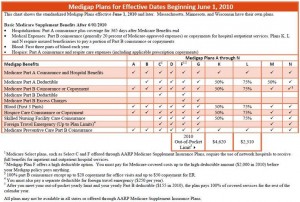The best Medigap plans are, quite simply, the least expensive ones. Sure, service and coverage are always a consideration, but with Medigap plans you can be assured that these factors are standardized. Let’s take a look at what is alike with all Medigap plans:
- First of all, Medigap plans all go by the standardized coverage chart (Medigap coverage chart). So all Medigap plans provide the same coverage for “like” plans. In other words, one Plan F is the same as another Plan F from a different company.
- Secondly, Medigap plans all pay claims through the Medicare “crossover” system. This system is designed to ensure that all companies are paying claims automatically as secondary to Medicare, without the insured having to file claims or being involved in the process.
- Next, all Medigap plans are required to be accepted by anywhere that takes Medicare as primary coverage. So if your doctor takes Medicare, they will, by extension, take any of the standardized Medigap plans.
So if all those things are the same, how do you know which plan in your area would be the best Medigap plan.Well, very simply, you can compare the plans based on premium and company rating. Those are the only two factors that differ from one company to another.
Premium is certainly the most important factor to compare. Since all of the above factors are the same, premium is the primary differentiating factor from one company to another. And, premiums can vary considerably. It is always essential to compare the plans, first and foremost, based on the premiums they charge. The premiums are based on your age and zip code, so they will vary from one person to another, depending on those two factors.
The second comparison factor that you should use when comparing Medigap plans is company rating. A.M. Best is the independent organization that rates insurance companies and that is who many people use to compare the plans. One thing to keep in mind is that these ratings are based on financial stability of the insurance company, and in no way, reflect customer service ratings, etc. That said, A.M. Best ratings can be a good indicator of a company’s financial track record and a good secondary comparison mechanism for Medigap plans.
If you would like to get a Medigap comparison or quotes, please call us at 877.506.3378 or visit us online at http://medigap-quote.com/get-quotes.
